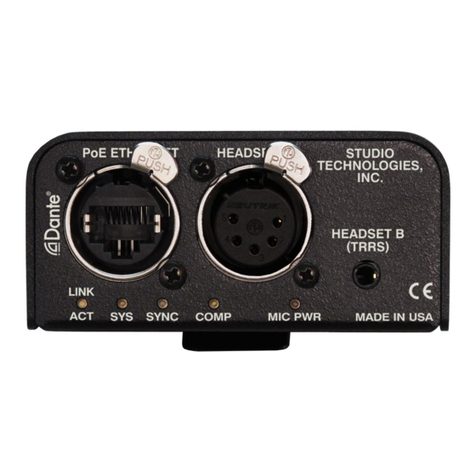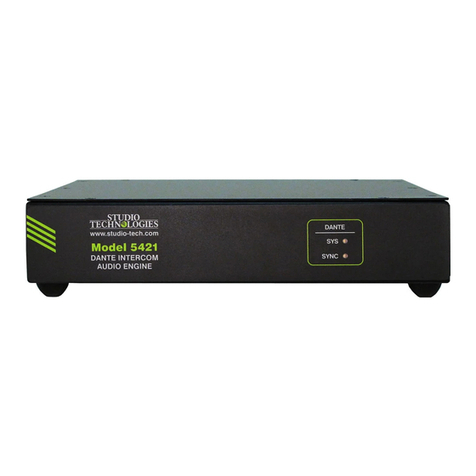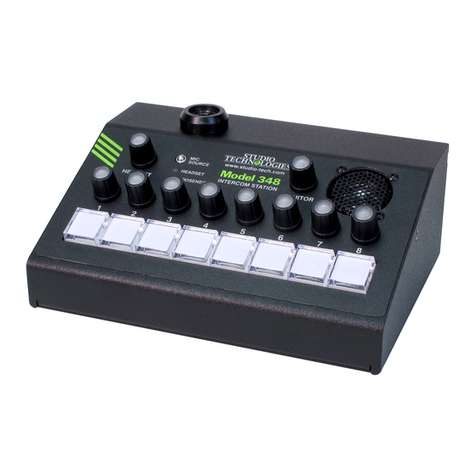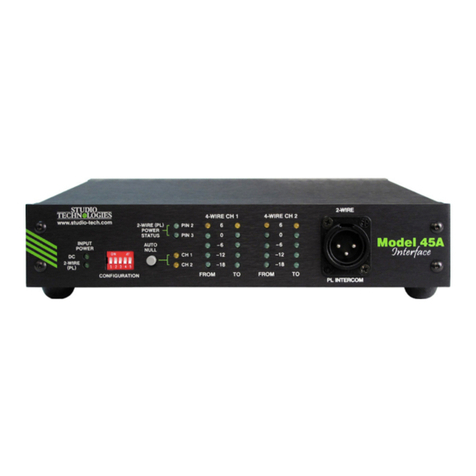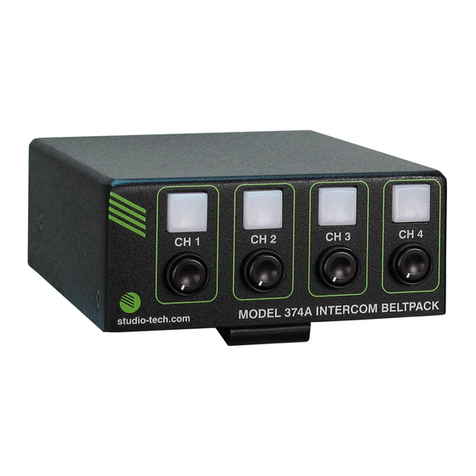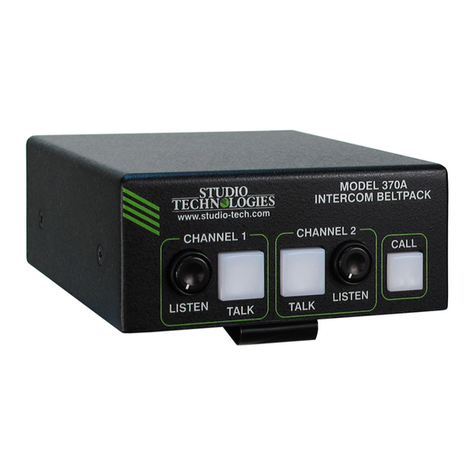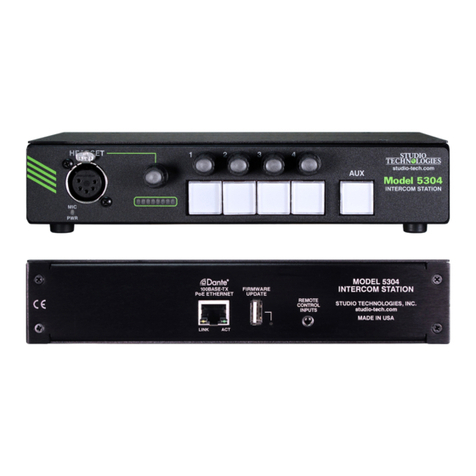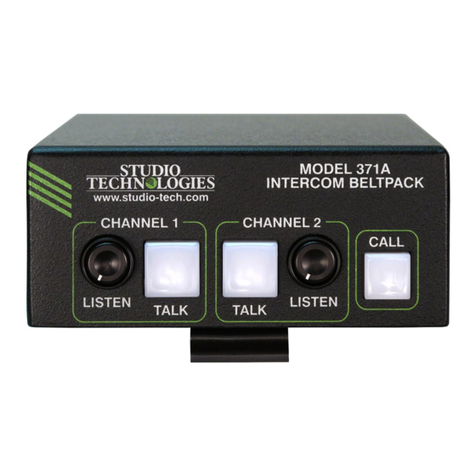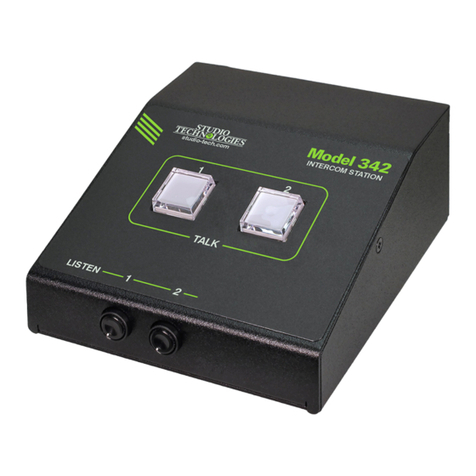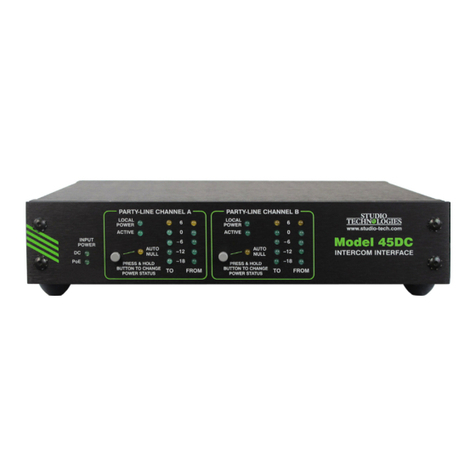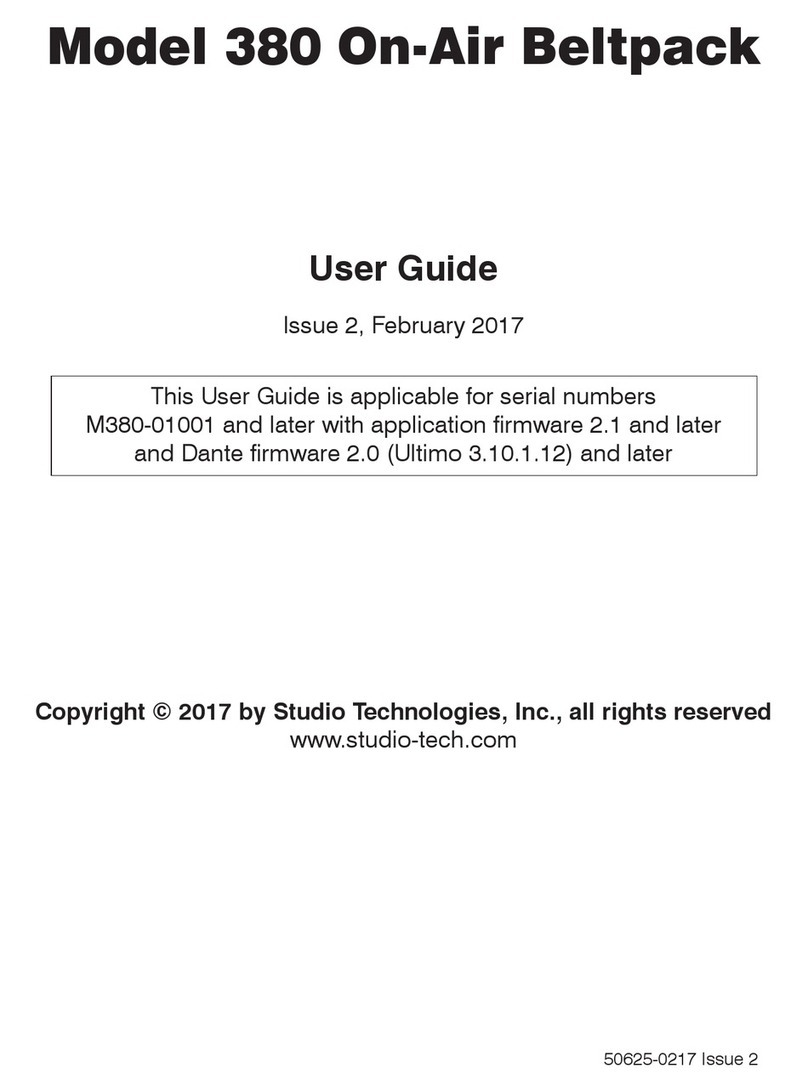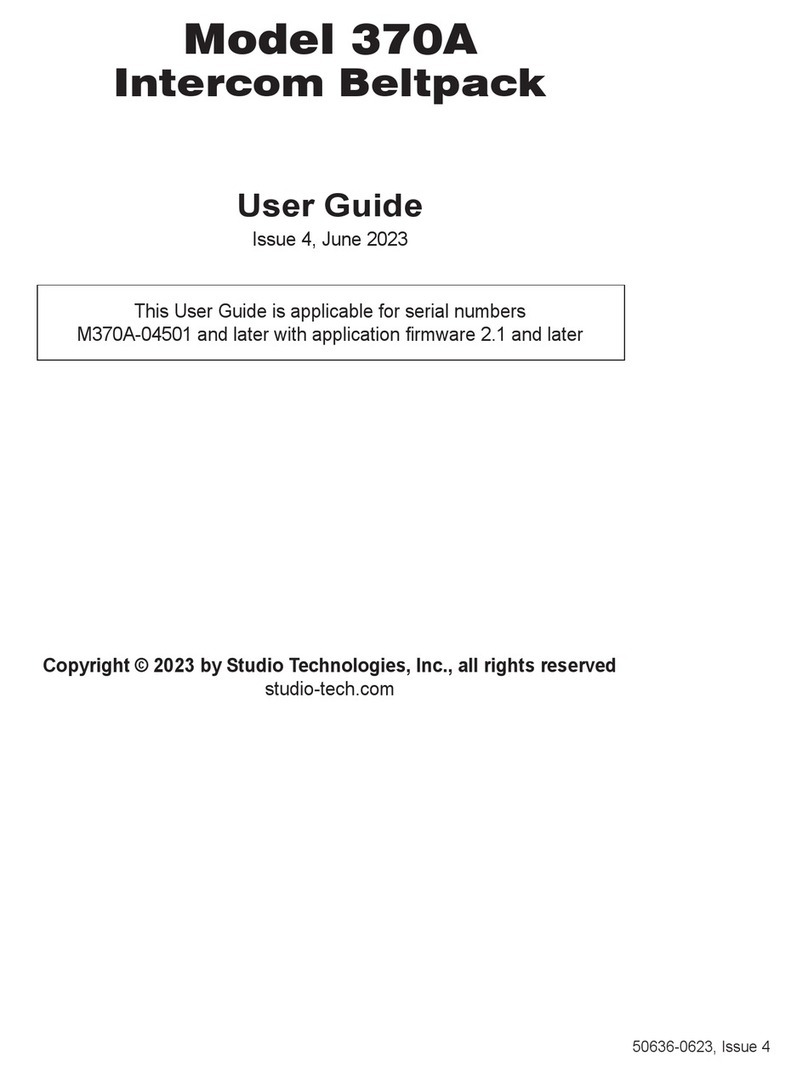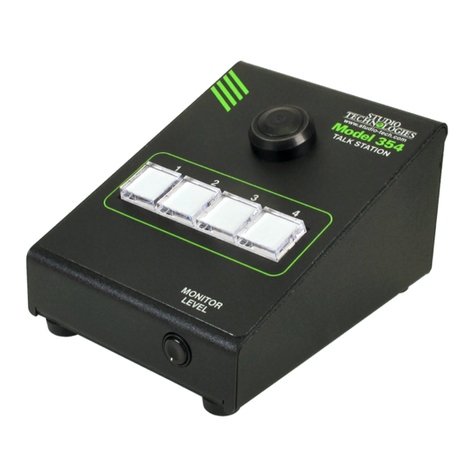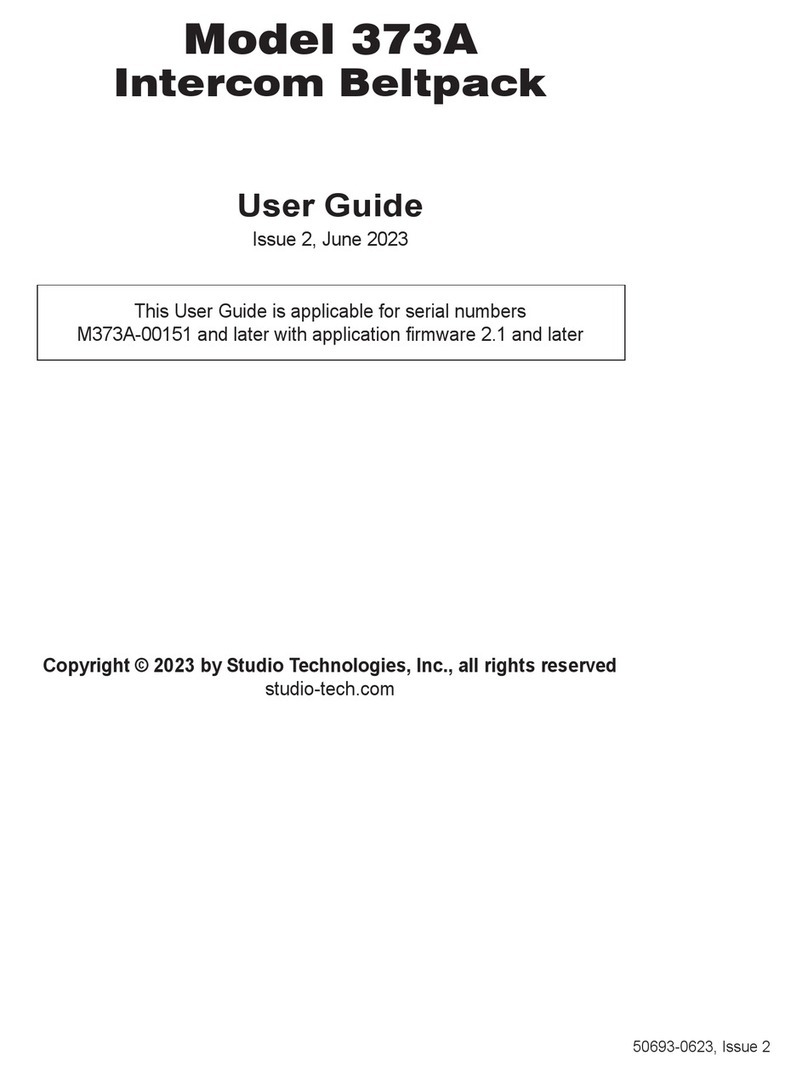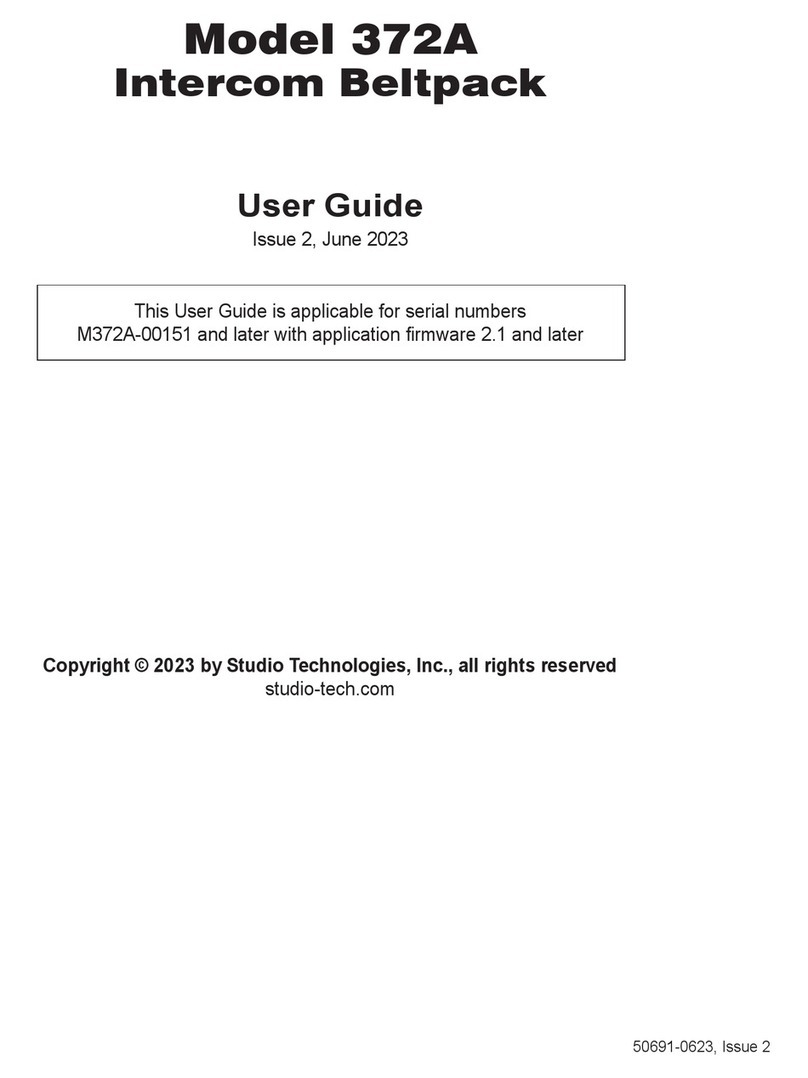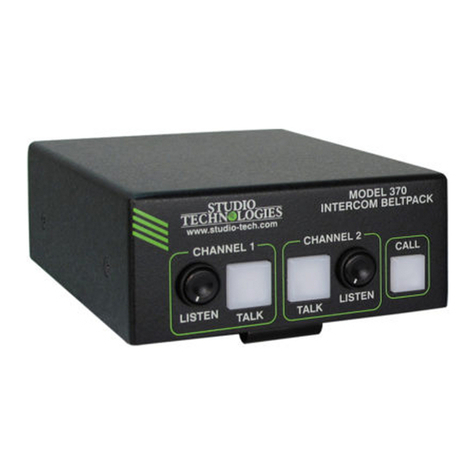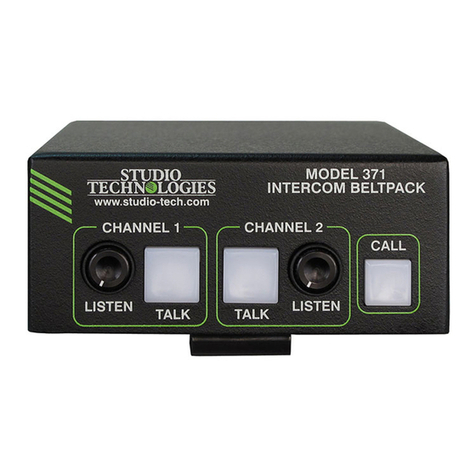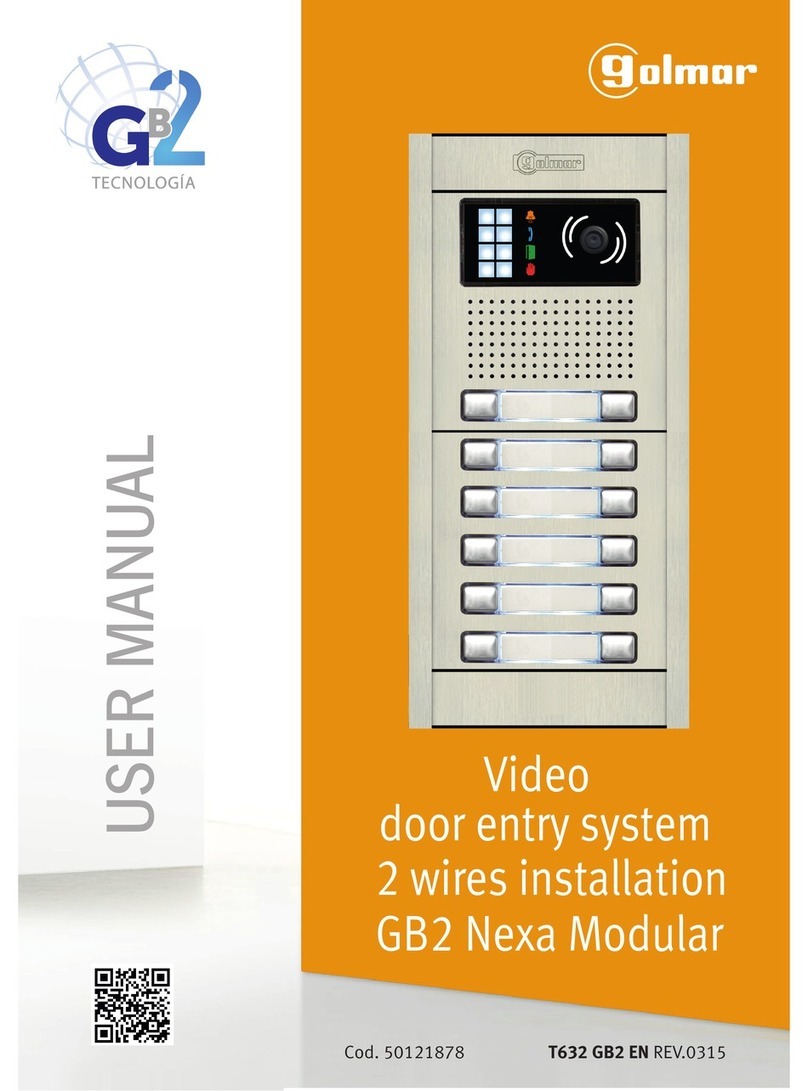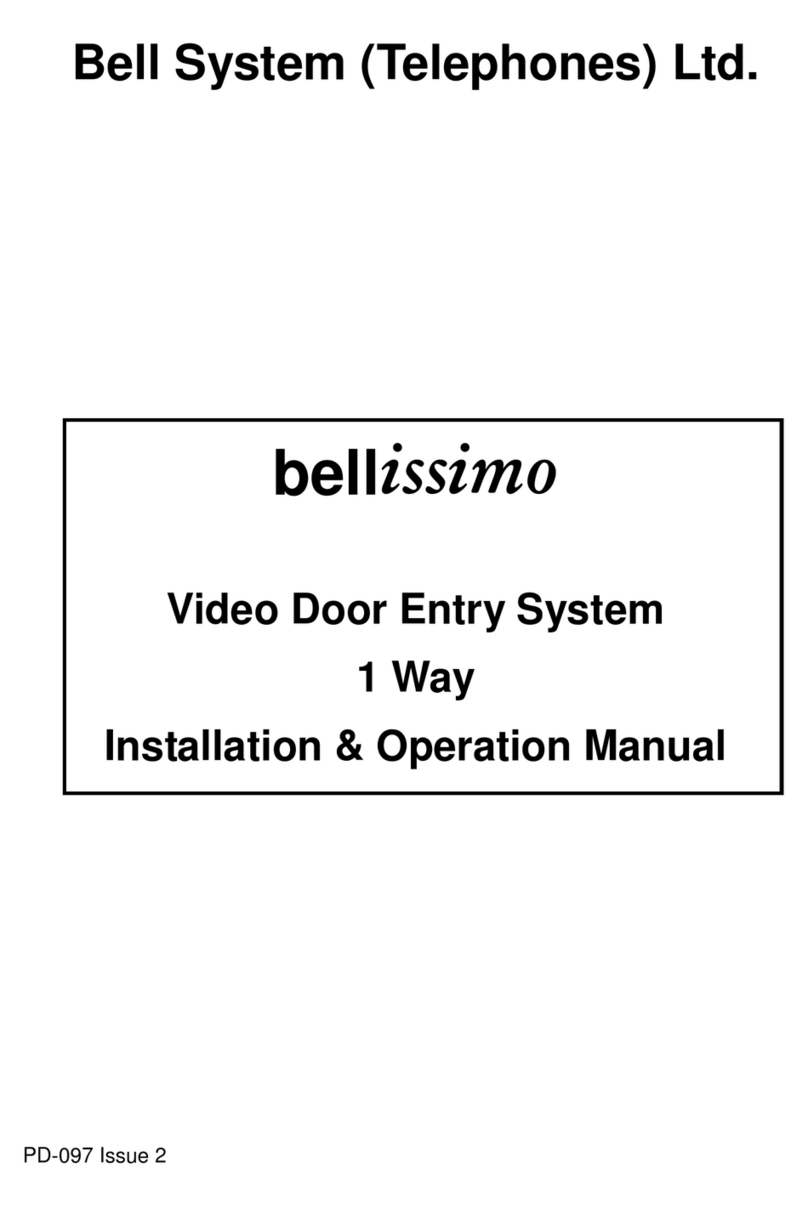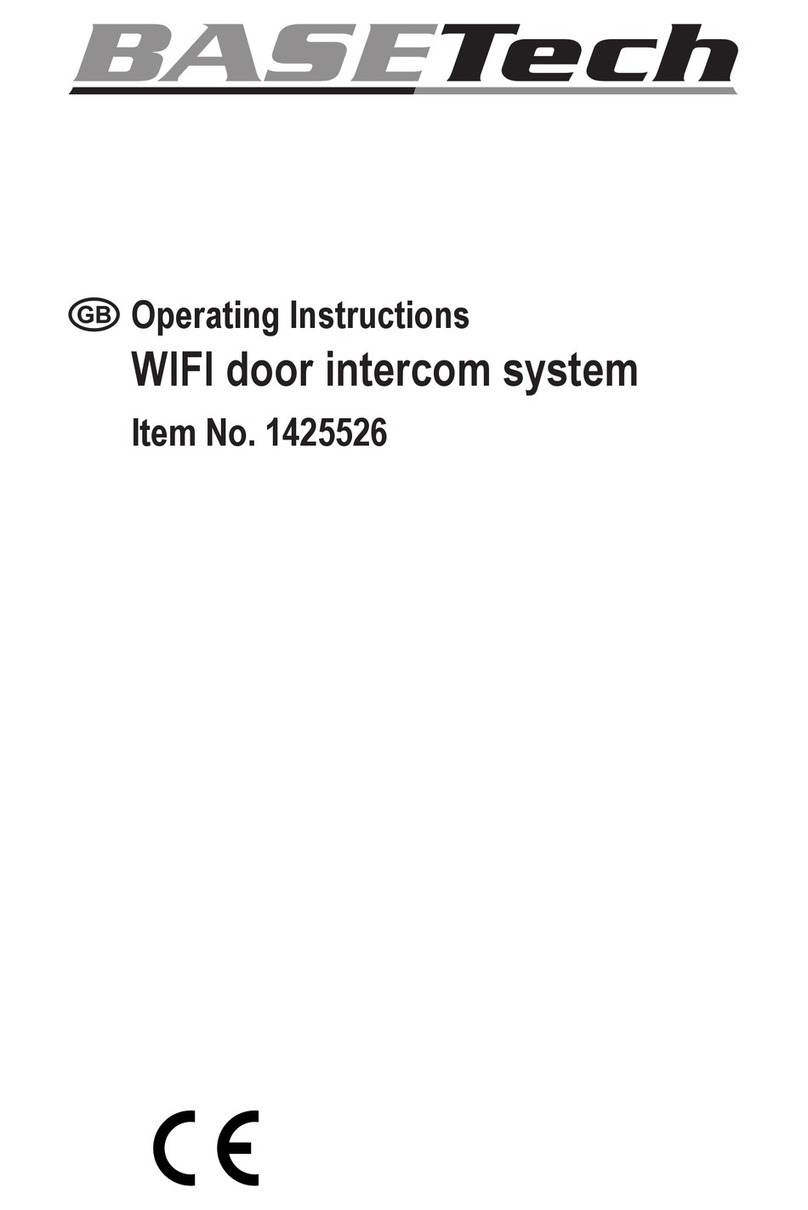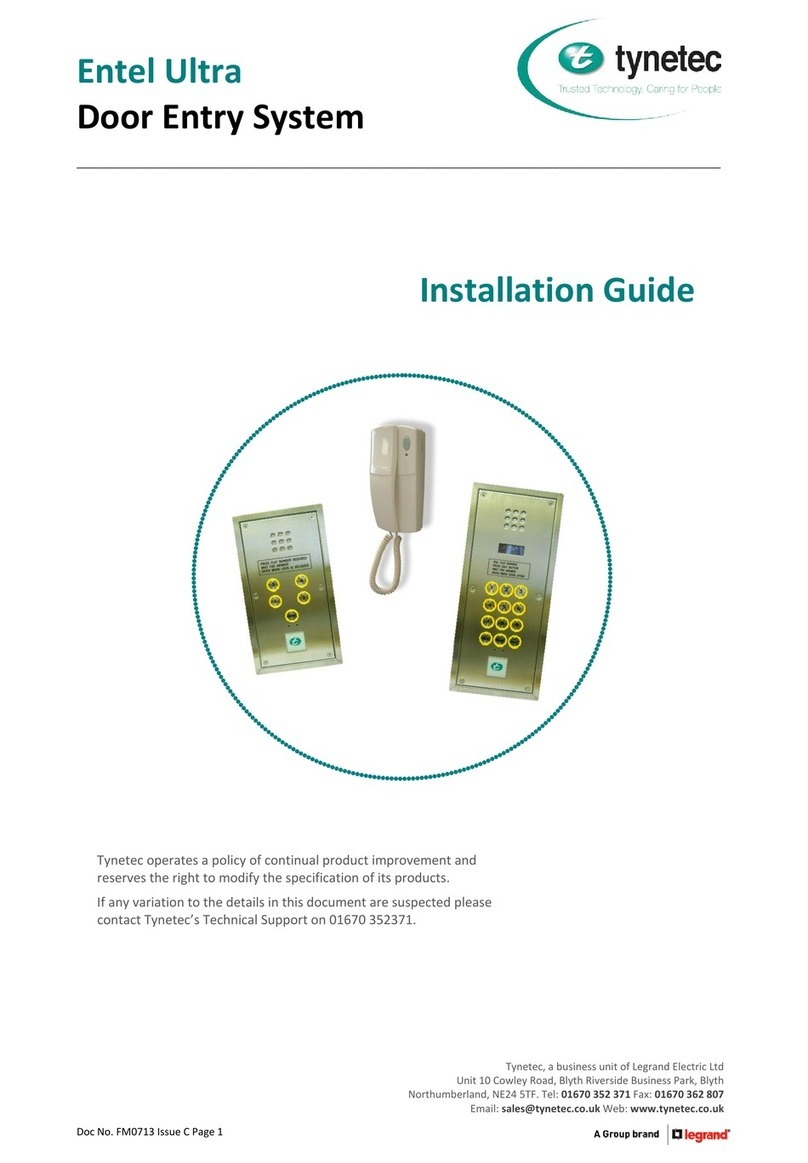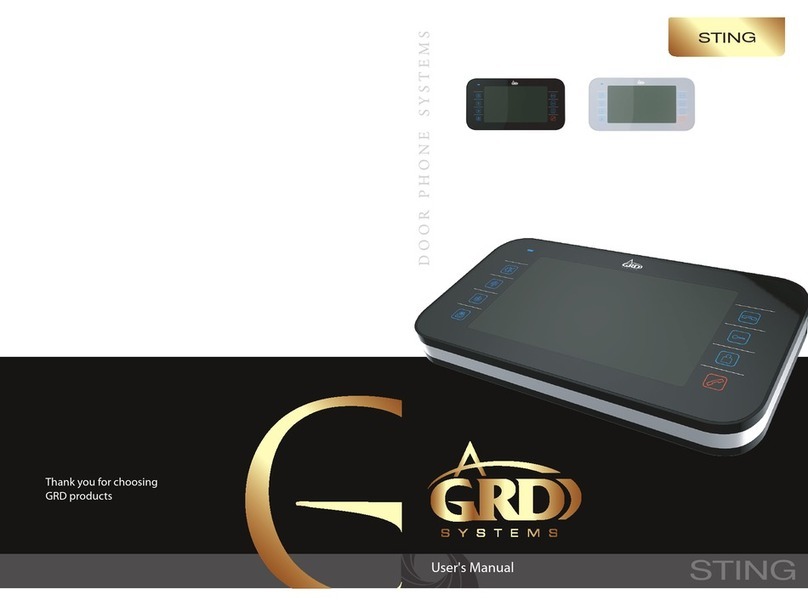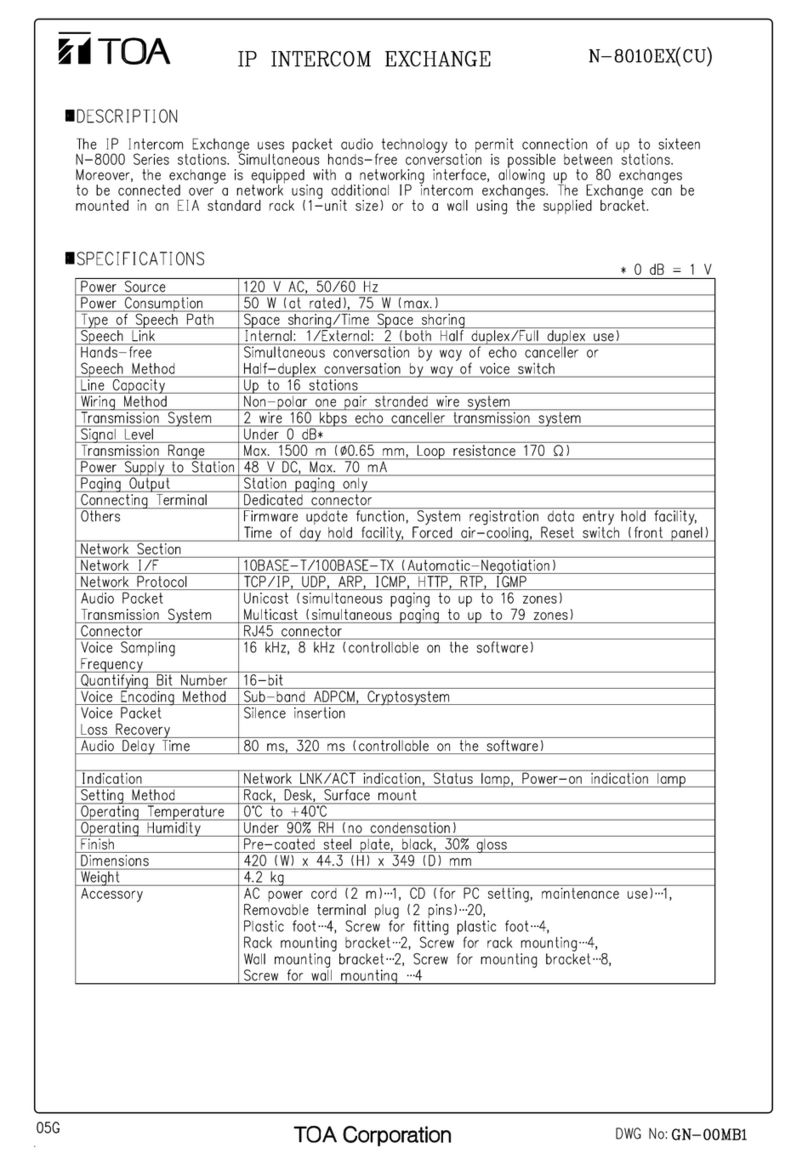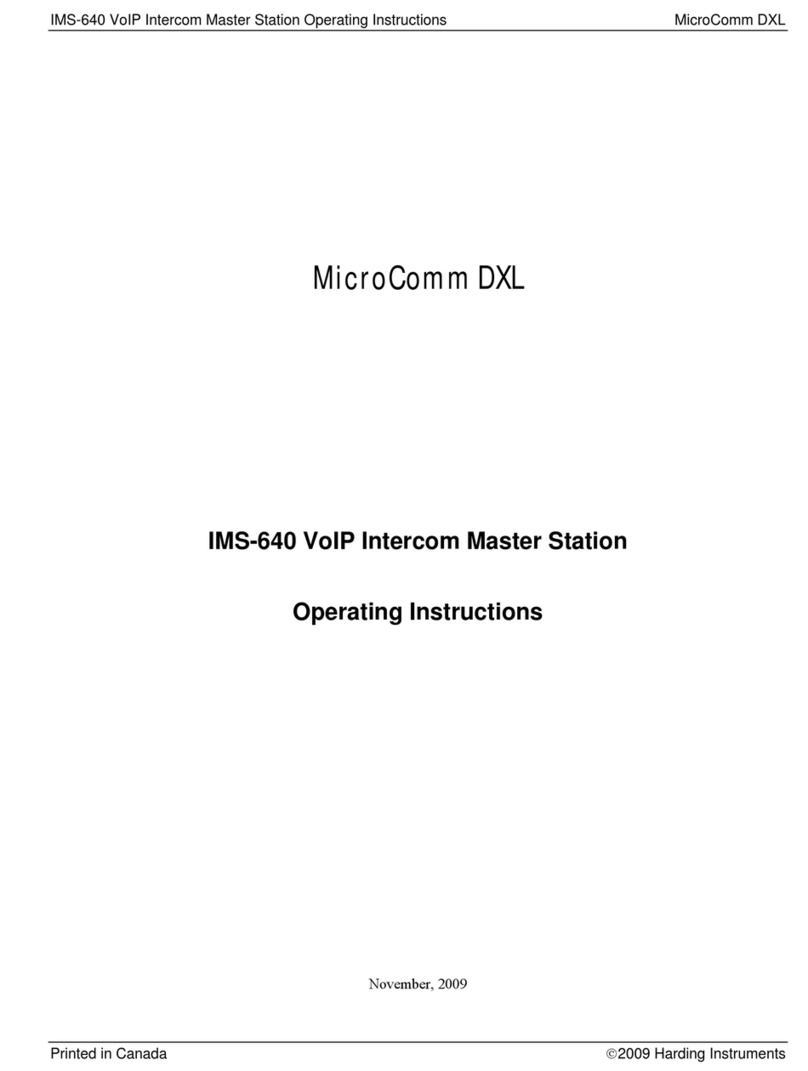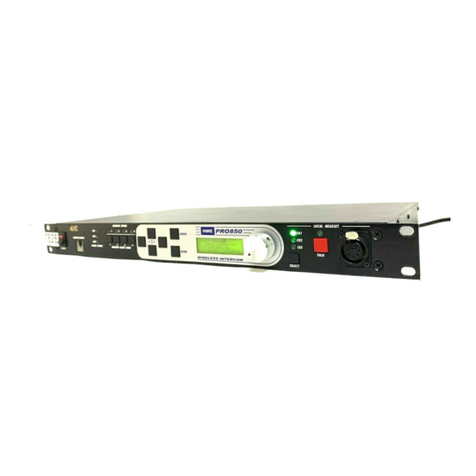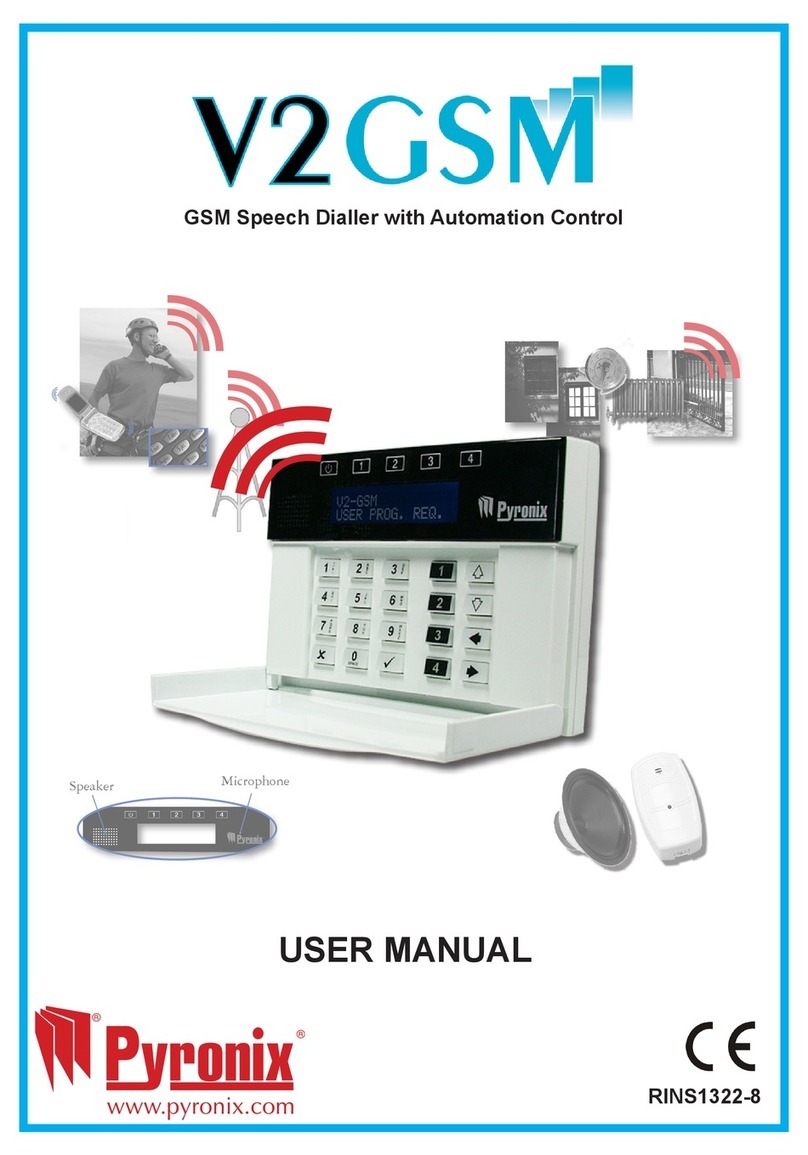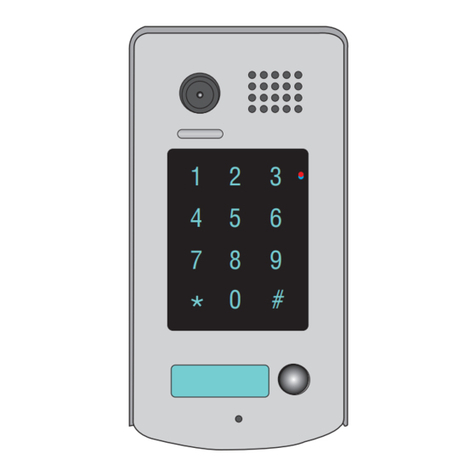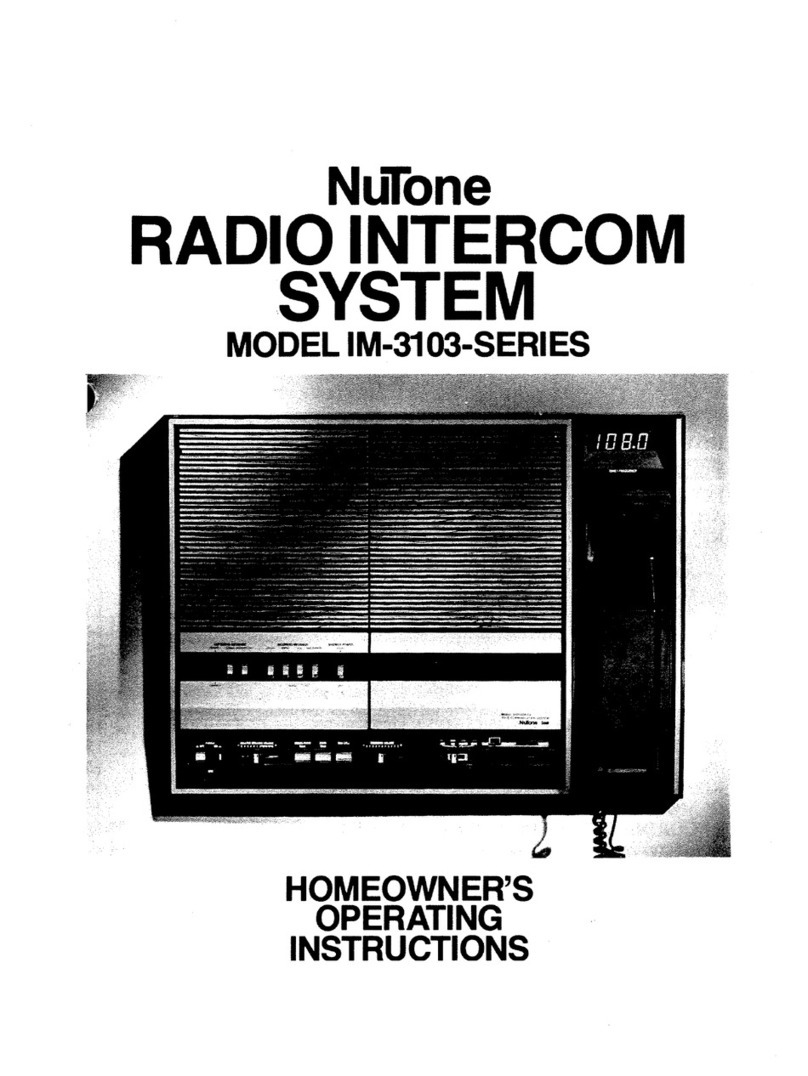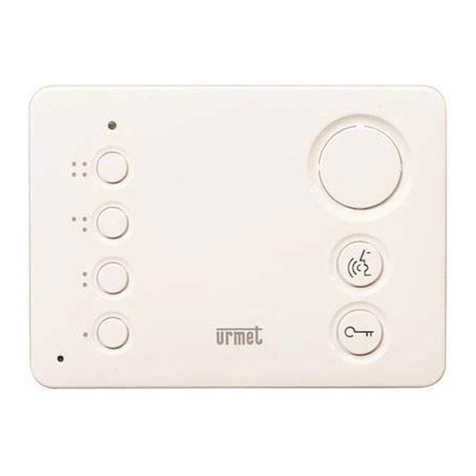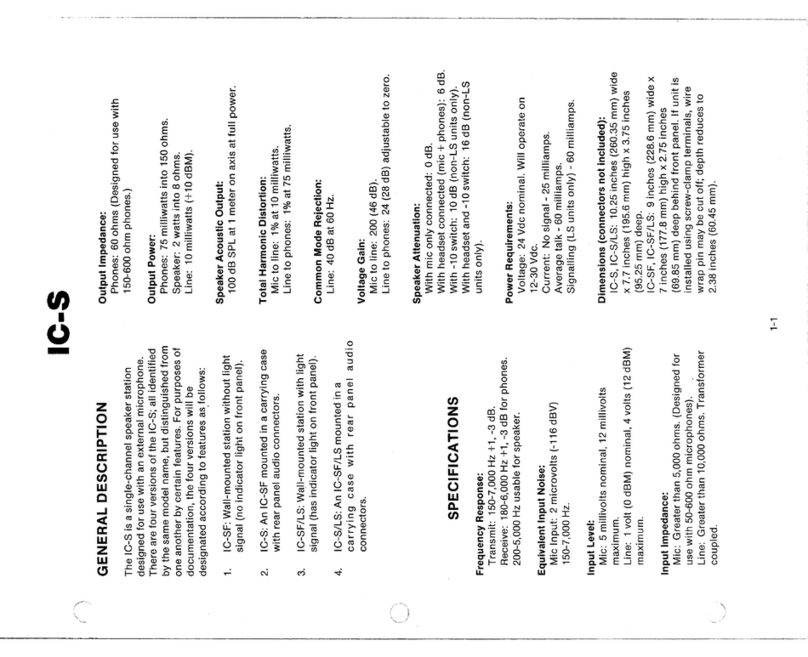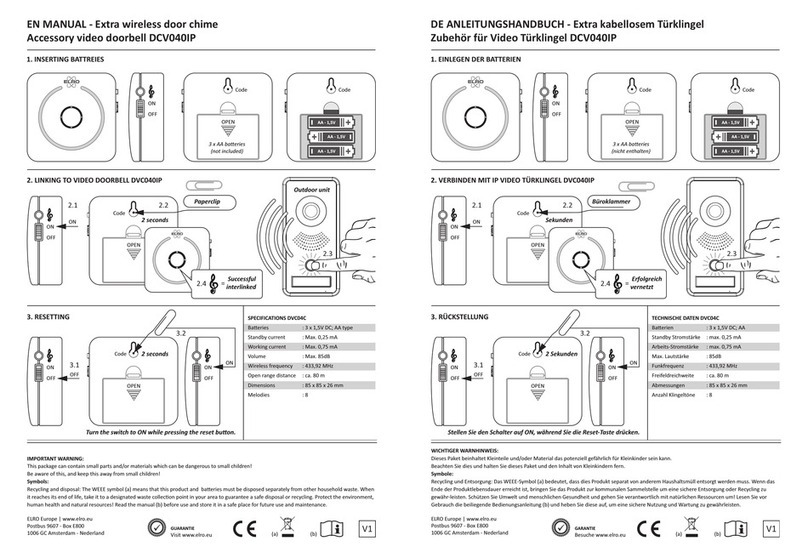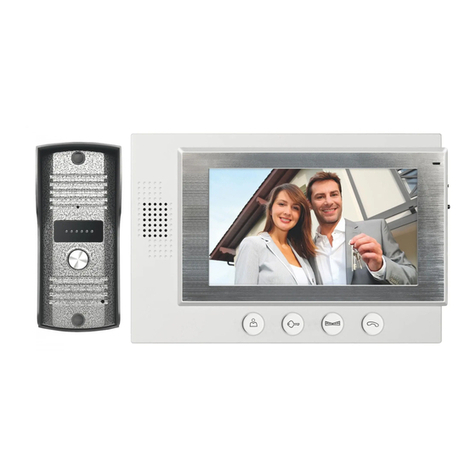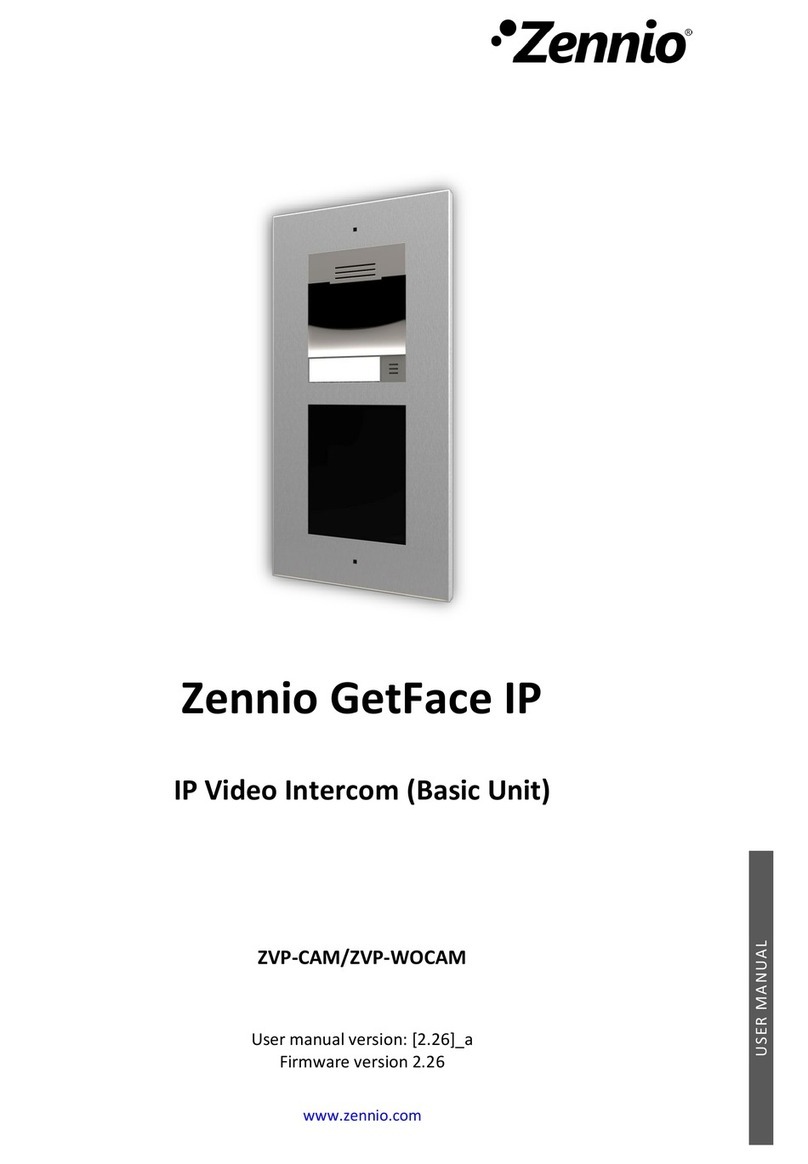
Model 5422A User Guide Issue 1, September 2021
Studio Technologies, Inc. Page 17
Model 5422A
DANTE INTERCOM AUDIO ENGINE
part of a specific PL wants to hear an audio signal cre-
ated by a Party-Line w/Auto Mix operating mode function
that contains everyone but themselves. They don’t want
to hear themselves coming back from the Model 5422A
as there could be too much or too little level, slight audio
time delays, or other audio artifacts. They’ll want to hear
themselves (by way of their own microphone) but through
the sidetone function that is provided by their own beltpack
or intercom station.
To further explain, let’s use the example of four users that
are part of a 4-channel virtual PL circuit created by the
Model 5422A. User one wants to hear talk audio from users
two, three, and four. User two wants to hear talk audio from
users one, three, and four. User three wants to hear talk
audio from users one, two, and four. And user four wants to
hear talk audio from users one, two, and three. To support
these four users requires that the Model 5422A create four
unique mix-minus functions. This is accomplished within the
unit’s digital logic circuitry. Four associated Auto Mix func-
tions help to ensure that the audio that each user receives
is uniformly excellent. And finally, for each user to hear
themselves (audio associated with their own microphone)
each intercom device (typically a beltpack or intercom sta-
tion) will have an integrated sidetone function.
To summarize, each member of a PL group is assigned
its own mix-minus channel, meaning that the audio that it
supplies to the group is routed to all other members of the
group but not to itself. A user receives confirmation audio
from their own microphone by way of its local sidetone
function and not from the group’s mixing and distribution
functions that create the multiple mix-minus buses.
The number of channels in a group that is assigned
to the Party-Line w/Auto Mix operating mode defines the
maximum number of Dante device talk/listen channels
that can join together to form a virtual party-line (PL). The
configuration choices range from one 32-channel PL (32),
to selecting eight 4-channel groups (4, 4, 4, 4, 4, 4, 4, 4).
What configuration choice is optimal for an application
will depend on the maximum number of independent PL
“circuits” that need to be established. A simple review
of an application should lead to the desired group
configuration.
While the maximum number of talk/listen channels that can
be assigned to a group is defined by the group size, this
does not mean that all channels associated with a group
have to be utilized. For example, if a Model 5422A is con-
figured to provide four groups of eight channels each, the
first and second groups could have five talk/listen channels
routed to them while the third and fourth groups could have
just three talk/listen channels routed to them. The unused
channels in a group don’t contribute any noise or audio
artifacts. They are simply “spare” and available for future
use, allowing additional talk/listen channels to be routed
to them as needed. Groups are just resources that allow
talk/listen channels on compatible devices to be linked
together. A group size just defines the maximum number
of device channels that can be part of a set of users that
can talk and listen among themselves.
As an example, if one group of 32 channels is selected
(32) then a maximum number of 32 of talk/listen chan-
nels from Dante-compatible devices can be routed (Dante
subscribed) to the group. This would equate to up to 32
of the Studio Technologies’ Model 372A or Model 373A
single-channel beltpacks being able to function together
in what for the users would be a party-line (PL) or shared
communication channel or circuit. If, as another example,
an application required that sixteen of the 2-channel Model
370A or Model 371A beltpacks needed to work together to
support two independent party-line channels, then a Model
5422A channel configuration choice of two 16-channel
groups (16, 16) would be appropriate.
When deploying a PL circuit, it’s important to note that two
channels are associated with each intercom channel of a
Model 5422A group. The Dante transmitter (output) chan-
nel of an intercom device will be routed (Dante subscribed)
to a Dante receiver (input) channel on a group that has
been configured for Party-Line w/Audio Mix operation. The
specific Dante transmitter (output) channel associated with
that group must be routed to the listen input on that spe-
cific intercom device. So, for example, if Dante transmitter
(output) channel one of a Studio Technologies’ Model 371A
Dante Beltpack is routed to input 02 of a Model 5422A PL
group, then that group’s output 02 must be routed to the
receiver (input) of channel one of the Model 370A. Output
02 is the mix-minus signal that channel one of this specific
Model 371A requires for correct operation; no other device
should utilize output 02.
Restated for clarity, for correct PL operation to take place
one, and only one, pair of channels (one “talk” and one
“listen”) from an intercom user device must be routed
(Dante subscribed) to one pair of channels (one “listen”
and one “talk”) on a Model 5422A PL group. These routes
must be made to associated channel pairs on both the
Dante beltpack or intercom station devices and Model
5422A PL channels.
Party-line (PL) channel routing (Dante subscribing) is
the main area of confusion when users first encounter
a Model 5422A. But after some study and experimenta-
tion the process should become clear. It’s important to
remember that when associating an intercom device to a PL
channel on a Model 5422A PL group always involves rout-
ing (Dante subscribing) two channels. Two routes (Dante





















